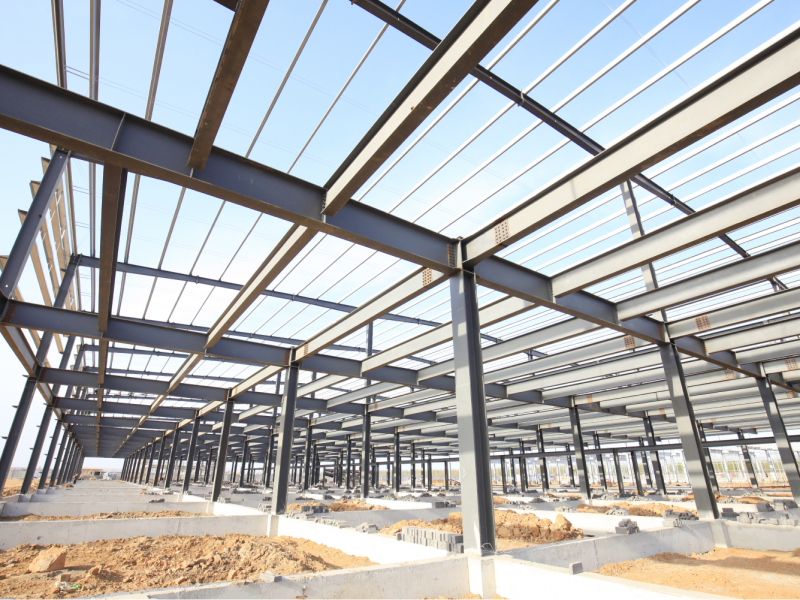What processes do we respect in our metal constructions?

Metal structures have countless advantages over other forms of construction, thus, some reasons for choosing steel are: its magnificent strength/volume ratio (which achieves lighter structures than those made with other materials), the wide range of its possible applications, the possibility of having many standardized parts, its reliability and its ability to give shape to almost all architectural desires.
The construction sector must lead to a new model of energy-efficient eco-building, within a sustainable development with a clear orientation towards the end user.
To achieve these objectives, the starting premise will be the use of more ecological materials, such as steel (sustainable, recyclable and reusable), which are compatible with factory construction techniques, constituting an ally for industrialized systems. Without a doubt, at a time when almost anything is possible, it is necessary to do what is most reasonable.
Quality assurance and control in manufacturing guarantee the safety and resistance of metal structures. A good design of the details, together with a high level of prefabrication in modern and well-equipped workshops, with qualified employees, and modern corrosion protection systems, guarantee, with a minimum of maintenance, an almost unlimited life of the structures made. with steel.
Metal structures also provide maximum adaptability in the change of use of buildings, since structural alterations can be easily made and connections to existing frames can be made with minimal inconvenience and cost.
The desire of the most developed countries is that more innovative and competitive technologies, systems and construction processes be developed in the construction sector that allow guaranteeing higher levels of quality and safety in construction, as well as improving the general competitiveness of the sector. through its modernization and modernization.
Furthermore, if time is considered as a significant variable in both construction and deconstruction processes, the proliferation of metal structures and the development of more steel-based components can be expected.
Some advantages of metal structures
- High resistance: the high resistance of steel per unit of weight means that the weight of the structures will be low, this is of great importance for the design of long span beams.
- Uniformity: the properties of steel do not change appreciably over time as is the case with reinforced concrete structures.
- Durability: if the maintenance of steel structures is adequate, they will last indefinitely.
- Ductility: Ductility is the property of a material to withstand large deformations without failing under high tensile stresses. The ductile nature of common structural steels allows them to flow locally, thus preventing premature failure.
- Toughness: structural steels are tough, that is, they have resistance and ductility. The property of a material to absorb energy in large quantities is called toughness.
The creation of this type of infrastructure is more complex than it seems at first glance and requires hard work. There are several phases that the metal must go through until it becomes the type of structure that you want to achieve.
The template is carried out by creating life-size templates of the elements that are intended to be manufactured. The diameters, hole placement and identification of each element concerned must be placed in their exact location to avoid making measurement errors. It must be taken into account that with new technologies many workshops no longer use templates but computers. The pieces are drawn indicating the measurements they would have and the data is sent to the machine in charge of manufacturing them.
The preparation, straightening and shaping part is done to eliminate any defects that the part may have before starting marking. Straightening is usually done in a cold press or roller machine, while straightening and forming is done hot. After doing these last operations, the piece must be perfect, it does not admit any type of crack or dent. It must be taken into account that, if the material does not exceed 10 mm, the shaping is done cold.
Then the marking process begins. This part of the manufacturing process must be very exact, since it must be marked where the cuts or drills will be made in the piece.
Cutting and drilling work is used to determine what shape and dimension the final product will have. These activities are carried out with different tools: saws, discs, shears, plasma and oxy-cutting machines. In addition, each of them is used for specific jobs, for example, the shear is used for planes, sheets and angles of no more than 15 mm thick, like this, the plasma cut is used for rather thin thicknesses. .
One of the parts of the manufacturing process is welding. To weld the pieces, they are first prepared with a bevel in the areas where they are going to be joined. Depending on how thick or thin the piece is, some machines or others are used. For thick plates, automatic oxy-cutting is usually used.
Drilling is necessary when the pieces are screwed together, in this case a drill is used. If possible, it is preferable to drill the pieces in one go, drilling two or more pieces already assembled.
In the assembly stage, the finished pieces are assembled, adopting the position they will have at the time of making the decisive joints. When the elements from the workshop go to the construction site, the extensions and provisions of the structures must be respected; if any of them do not correspond to the assembly dimensions, they are rejected or modified.

